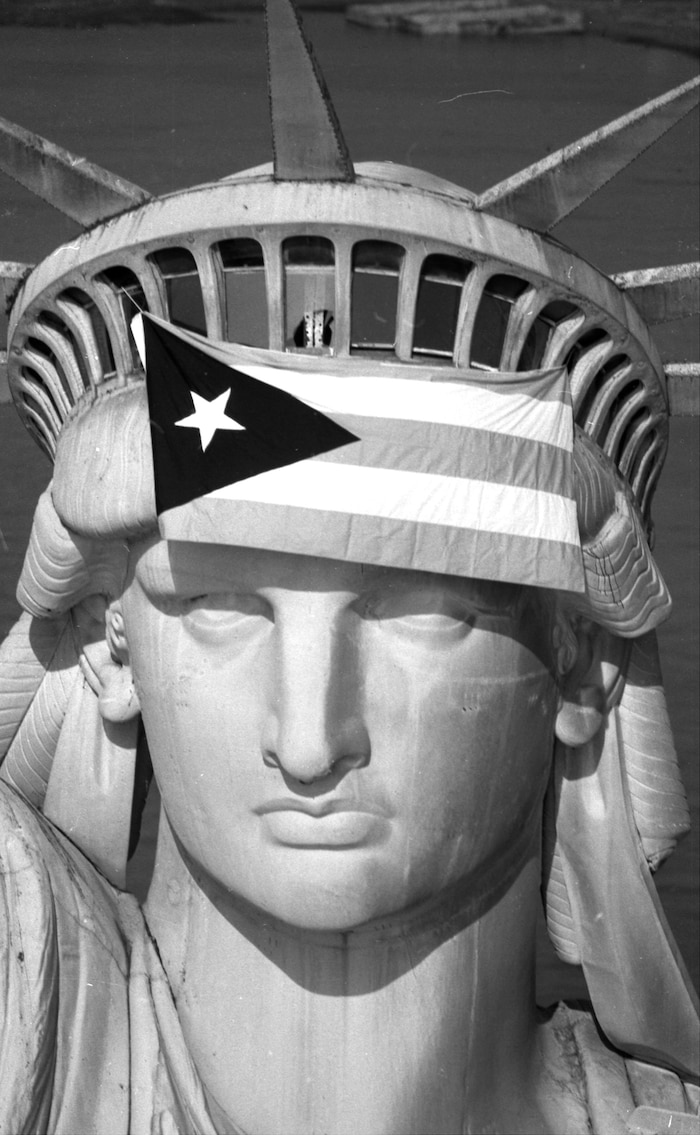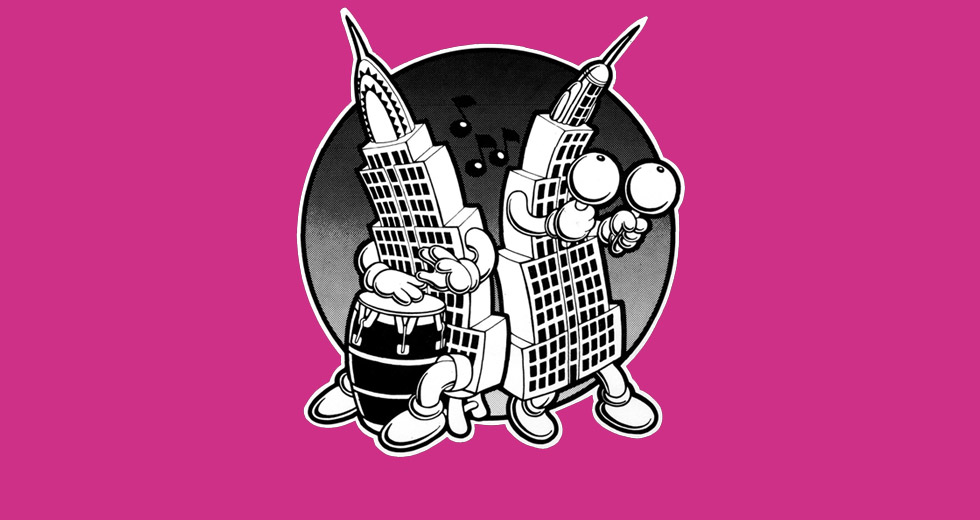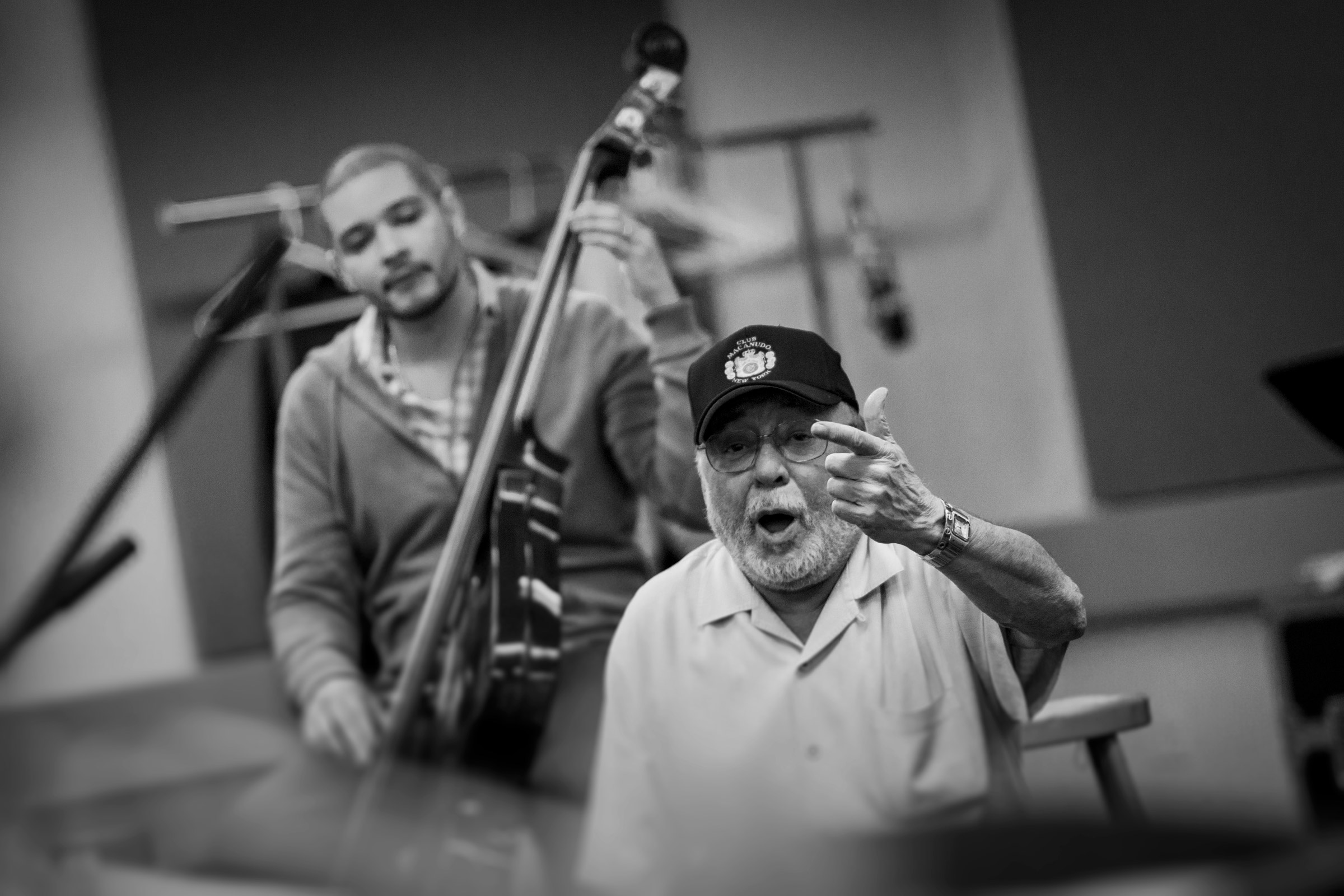How “Que Bonita Bandera” Became a Revolutionary Puerto Rican Anthem
Marlon Bishop explores the song’s enormous impact

By the early 1970s, salsa had its fist in the air. The hard-driving Latin dance music coming out of New York City was developing a fierce message to match its musical edge. Records like Héctor Lavoe’s El Malo (roughly, “The Bad One”) that dealt with street tales, women and partying were giving way to Tony Pabón’s La Protesta (“Protest"), Ray Baretto’s Baretto Power and Eddie Palmieri’s Harlem River Drive. The new music coming out was often about Puerto Rican empowerment, whether subtly or overtly. But the political fervor hitting salsa didn’t come out of nowhere. Musicians like Palmieri have pointed to the Young Lords, a militant Puerto Rican activist group, as a major inspiration for the shift. Indeed, before it became fashionable for salseros to get radical, the Young Lords were employing music toward revolutionary ends.
In 1969, young people across the United States were primed for rebellion. The previous year saw massive student uprisings, the assassination of Martin Luther King Jr., and riots at the Democratic National Convention in Chicago. Revolution was in the air, and it was on the block. In New York’s East Harlem, the Puerto Rican enclave also known as El Barrio, a group of bookish Puerto Ricans with liberation on the brain decided to rise up and form a New York chapter of the Young Lords.
The Lords were a former street gang from Chicago that had transformed into a Black Panthers-style activist organization. They believed in leftist economic principles, independence for Puerto Rico, and most importantly, taking direct action to address issues facing their community. (The New York chapter would eventually break away from the national organization and form a separate group called the Young Lords Party).
The Young Lords, mostly in their late teens and early twenties, grew out beards and marched in army jackets and purple berets. Their goal was to bring attention to the deep inequality facing Puerto Ricans in the city – endemic poverty, inadequate housing, lack of city services. For their first action, they collected garbage festering on the streets of El Barrio, piled it up into a five-foot tall barricade in the middle of third Avenue, and set it ablaze. The city took notice, and garbage collection improved. The Young Lords declared the mission a success – they proved to the neighborhood they could get shit done.
One song could inevitably be heard at the Young Lords’ marches and rallies. “Que Bonita Bandera” (“What a Beautiful Flag”) became the group’s unofficial anthem. The song is a plena, a Puerto Rican folk genre based around call-and-response. The lyrics – sung in Spanish – are made up of a chorus that repeats over and over again the words “what a beautiful flag, what a beautiful flag... the Puerto Rican flag,” interspersed with short improvised verses, such as: “Blue, white and red and the middle it has a star. What a beautiful flag my Puerto Rican flag is.” At first listen, it appears to be just a simple nationalistic song about a flag. But for Puerto Ricans, the flag is more than just a flag.
“The Puerto Rican flag was banned for a long time, by colonial decree. So the song was viewed as subversive,” explains Carlito Rivera, a Young Lord who served in the group’s Ministry of Defence. Rivera is referring to the so-called “Gag Law” in Puerto Rico, which made it illegal to own or display a Puerto Rican flag until 1957, an attempt to suppress the pro-independence movement on the island.
“So for us, singing ‘What A Beautiful Flag’ is similar to when African-Americans began to say ‘Black is beautiful,’ because for centuries black people were told they were ugly. The narrative is changed. So when we said ‘the flag is beautiful’ the implication is that, if it’s beautiful, it should to be flying over Puerto Rico.”
For the Young Lords, the Puerto Rican flag was a rallying cry. “It came to symbolize the experience of Puerto Ricans in the American slum, the exclusion of Puerto Ricans based on language and race, and the call for Puerto Ricans to stand up and fight against their subjugation,” says Dr. Johanna Fernandez, author of a forthcoming book on the Young Lords. “It was clearly also tied to colonialism in Puerto Rico. And so ‘Que Bonita Bandera’ came to signify Puerto Rican freedom both on the island and the US mainland.”
Here we were in this occupied church, and our Puerto Rican nationalism was being born.
The best-known recording of “Que Bonita Bandera” is by Ramito, a popular singer of música jíbara – traditional music identified with rural people in Puerto Rico’s mountainous interior. (Ramito appears to have registered the song as his composition in 1968, but most Puerto Ricans I spoke to believed the song to be quite a bit older. A plena expert told me it’s very probable Ramito began singing and recording the song long before he registered it. It’s also possible the refrain was written by “the street” and simply picked up by Ramito, which is very common in plena music.)
Ramito and other jíbaro musicians sang songs celebrating Puerto Rican culture, but rarely openly connected that pride to the cause of independence. The song was popularized in the Nuyorican political scene by Pepe y Flora, a husband-wife folk duo who were active in the ’60s and ’70s. They played jíbaro music as well, but filtered it through the Latin American protest song tradition. (“Think the Puerto Rican Joan Baez,” says writer Aurora Flores.)
Pepe y Flora recorded a handful of records in the late ’60s, and could be found performing at just about every political rally related to Puerto Rico’s independence movement. “For us it was very important because we were away from our island and we needed our people to understand their history and feel Puerto Rican,” says Flora Santiago, now 75 years old and living in Puerto Rico. “We needed to keep their dignity up, and that’s why we gave our talent and our music to the people in the streets.”
Pepe y Flora introduced “Que Bonita Bandera” to the Young Lords during what is perhaps the activists’ most iconic action. In the December of 1969, the Lords showed up to the First Spanish Methodist Church in East Harlem and asked the reverend, a conservative Cuban exile, for permission to use the church space to deliver social services to the neighborhood. Somebody called the police, who beat up and arrested 13 of the Young Lords. Undeterred, the Young Lords returned a few weeks later and took over the church by force. They kicked out the reverend, barricaded and chained the doors, and declared it “The People’s Church” – a space to serve the people of El Barrio.
For 11 days, the Young Lords occupied the church as police dug in outside, waiting for orders to evict them. During the day, the Lords used the church as a base to run a breakfast program for kids, clothing drive and daycare center. In the evenings, they hosted a sort of freeform open mic party. There were leftist film screenings, poetry recitals and music performances. Prominent radicals and celebrities like Jane Fonda came through to support the young rebels. On one of the first nights, Pepe y Flora performed a legendary set, including the song “Que Bonita Bandera.”
“It started spontaneously and people just joined in. You didn’t need to know the words,” says Pablo “Yoruba” Guzman, one of the founders of the New York Young Lords and a longtime television reporter in the city. “It rocked, it was alive, and it had layers of meaning. Here we were in this occupied church, and our Puerto Rican nationalism was being born. We instantly made connections between what they were playing, to the folkloric music we were learning about, the music our parents listened to when we were children. The neurons were tripping over each other and firing off.”
On the 11th day, police raided the church. The Young Lords gave themselves up peacefully. As they were led into the paddywagons, their fists raised, all around their supporters began to sing the song that had already caught on like wildfire in El Barrio. “What a beautiful flag, the Puerto Rican flag.”
The Young Lords continued to sing “Que Bonita Bandera” at their marches and actions, and the song is part of the soundtrack to Puerto Rican progressive political life to this day, both on the island in the diaspora. After the episode at the church, the Young Lords would go on to hijack a tuberculosis testing truck to provide services to El Barrio and publish a bilingual newspaper. But they wouldn’t last much longer. In 1971, the group dissolved due to infighting and infiltration by law enforcement. Yet the spirit of the Lords lived on. They left the New York community mobilized in a way it had never been before. “The Young Lords gave Puerto Ricans a big coming out party in NYC,” says Dr. Johanna Fernandez, the Young Lords scholar. “They articulated a very Nuyorican identity that had become highly politicized.”
That politicization filtered into the musicians in the salsa scene, from Eddie Palmieri to Ray Barretto and beyond. And in turn, says former Young Lord Pablo Guzman, those salsa musicians continued to nurture Puerto Rican resistance and identity in New York.
“Whether it was learning about Puerto Rican freedom fighters from history or listening to Latin jazz it was like, ‘woah, I’m part of this.’ It puts something inside you, it swells your chest with pride and confidence, and it’s something almost spiritual you can use to fight back.”

